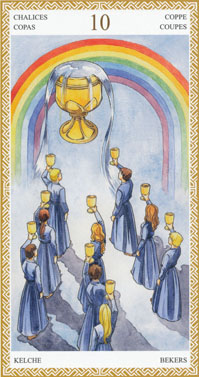
A list of tarot cards will help you learn the meanings of each card. These lists can be grouped into major and lesser arcana. Cards are also arranged by suit. This will make it easy to comprehend the 78 cards. This will help you to decide which cards you should be focusing on.
78 cards
This deck is available as a collector's set, featuring a magnetic box and holographic foil accents. Its 78 cards make the artwork pop more than other tarot decks. Each card is 350g in weight and has a matte finish to keep the reader from glaring during readings.
There are 78 cards that can be used to represent a wide range of themes. The 78 Nautical Tarot includes artwork by many artists. The cards are linked by the nautical theme, even though the artwork might be different. This gives the deck an overall sense of unity as well as connectivity.

Tarot cards can be broken down into two groups. The Major Arcana has cards that cover general topics while the Minor Arcana includes cards that are more practical and commonplace. These cards are representative of emotions, actions, and common situations that we deal with every day. A Tarot guide provides a complete understanding of all 78 cards, as well as basic concepts that you can use in Tarot spreads.
Four suits
Four suits are found in traditional tarot cards. Each suit includes ten cards. There are four cards for each of four elements and four cards to represent the "Royal Family". Tarot decks contain 22 Major Arcana card. These images represent many situations in life.
The four suits of the Tarot are used to represent different aspects one's personality. The first suit is the suit of Wands, which represents the beginning of an idea, growth, and purpose. A Wand card can also be used to represent an issue in its early stages.
The Minor Arcana (also known as the pip) is the 56 remaining cards in a deck of tarot cards. These cards are the elements and are arranged according their properties. In addition, they are arranged according to their value progression, from jack to ten.

The Fool
The Fool is an excellent card for overcoming fear. This card is full of energy and daring, and represents the playful spirit inside us. This card encourages us to take risks and trust that the Universe will find us. It's also a great card for people who are uncertain about their life direction.
The Fool is a card that encourages us to pursue our curiosity. It encourages people to live life to the fullest and to embrace a carefree spirit. The Fool also encourages people avoid fear and embrace new opportunities. The Fool encourages people to let go of fear and live with joy.
Depending on where the Fool is located on the list, it could signify the beginning of a project or the end of an existing project. It can also indicate that you have trouble trusting others and yourself.
FAQ
What are some competitive hobbies?
You can compete in running, swimming or cycling as well golfing or tennis.
They're usually played by people who enjoy physical activity but also provide an opportunity for social interaction.
You'll likely find others who are interested in your hobby if it involves physical activity.
This could be as simple as joining a sports club where you play regularly together.
You could also opt to take part in team games that involve playing alongside others.
These include football (soccer), cricket, rugby, netball, basketball, hockey, baseball, volleyball, badminton, squash, handball, and table tennis.
There are many kinds of competition.
Some competitions may be held for pure recreational purposes.
Others are intended to test competitors' skill.
Other rewards are available to recognize exceptional performance.
These cases award prizes to the winners.
Other competitions aim to assess the strength and endurance of competitors.
These are called endurance events.
For example, marathon races, triathlons, Ironman Triathlon, etc.
Before participating in these events, athletes often train hard.
To prepare them mentally and physically, they will be following a strict training regimen.
They might need to travel some distance during preparation.
It's important to remember that not all athletes compete in every type of event.
What is a hobby that kids can do?
A hobby for kids is any activity they like to do as part of their normal daily routine. You might find them interested in drawing, building things, painting, writing stories, playing with toys, listening to music, reading books, watching TV, and playing computer games. They may also like to play soccer, football, basketball, cricket, rugby, baseball, and hockey.
Parents worry that their children might get in trouble if they are allowed to do what they like. It is not true. Your child will not get into trouble if he or she is safe and doesn’t cause any harm to other people or themselves.
It is important that people remember that simply because they love doing something does not mean they will always do it. They might decide to draw instead of write if they enjoy drawing pictures.
There are many hobbies available, so you can choose the one you like best.
How can I find a hobby for myself?
You may feel overwhelmed when you start your quest to find a hobby.
You're likely thinking, "I can't be very artistic" or "I have no idea what I'm doing."
There is a good chance that you have some experience with hobbies.
It's just that you haven't realized it yet.
Have a look at your home. What amount of stuff do you have?
Do you have any toys from the past?
Perhaps you own a collection or magazines.
You might have always wanted the ability to cook.
Maybe you want to get back into playing the guitar.
It doesn't matter what it is, you can probably turn it into a hobby.
It is important to recognize that you already have a lot of experience to draw from.
And once you do, you'll be able to pick out a hobby that fits right into your lifestyle.
What are some good hobbies ideas?
It's the hobbies you are most passionate about that make you happy. You'll be more motivated to do what you love. This will give you a reason for not feeling well, or tired.
Hobbies that we all know and love include gardening, painting and crafts, photography, cooking, sports and games, reading, music, film-making, collecting, cycling, walking, dancing, writing, playing instruments, etc.
You could also consider volunteering at a local charity shop, animal shelter, children's hospital, hospice, elderly care home, school, community center, church, etc.
Let's say you are looking for something more exciting. Consider scuba diving and skydiving.
There are many unique ways to spend time in the outdoors, whether you're looking for adventure or a more traditional way to do it. You can go cliff diving, cave tubing or snowshoe hiking, snowshoeing or snowkiting.
What is the cost of a hobby?
A hobby costs nothing but time. If you're serious about it, however, it may take you many years to reach your goals.
But there is one thing you can do to help yourself. It's called 'passion.' If you have passion for whatever it is you do, you will find it easier to put in the hours required to make progress.
And once you start putting in those hours, you may find that you become addicted to the activity. This is where the real fun begins. Because you now enjoy what you do and are improving your skills every day. You will likely have seen a significant improvement by the end the year.
It doesn't matter how long it takes. Just go ahead and try. You might just surprise yourself!
Is it possible making a living as a hobby?
Not necessarily.
You could be wealthy if you have a passion for starting your own business.
Let's suppose you enjoy cooking. You love healthy food and decided to open a restaurant.
You only prepare organic meals from scratch. To cover the labor and ingredients costs, you will charge your customers a small service fee.
You can grow your clientele over time and eventually hire employees who will work alongside you.
You may eventually add vegan dishes and gluten-free options to your menu.
In this situation, you have a successful business which has allowed you the freedom to lead the lifestyle that you want.
This doesn't mean that you have to give up your job.
You could also run your restaurant, while still maintaining your 9-5 job.
Statistics
- I am 100% biologically a woman (discover.hubpages.com)
- The intensity of the dialogue partners' bond at the end of the forty-five-minute vulnerability interaction was rated as closer than the closest relationship in the lives of 30 percent of similar students. (time.com)
- A new survey by Pew Research Center of teens ages 13 to 17 finds that 36% of girls feel tense or nervous about their day every day; 23% of boys say the same. (pewresearch.org)
- Almost 80% of people claim to have no hobby. (hobbylark.com)
- The Role of the Mind in Sex, Dating, and Love: Men in the “humor” condition received phone numbers from 42.9% of the female participants and were refused 57.1% of the time. (time.com)
External Links
How To
How to get started gardening
Gardening is one form of agriculture that dates back to the beginning. You need patience, perseverance, and determination. The first step to starting a garden is to pick a spot where you will grow food. You can choose to have a large area or a small one in your backyard. Next, pick the type of plants that you would like. Do you prefer flowers or vegetables? Some people like to grow herbs and others enjoy raising livestock, such as rabbits. Before you decide on what type of crops to plant you need to take into consideration how much space you have. If you live somewhere that has cold winters, it might be a good idea to grow berries or fruits.
After you have decided what you want to plant, it is important that you prepare the soil. How your plants perform is dependent on how well the soil you use. The soil should be rich in organic matter to provide nutrients for your plants' roots. Organic matter includes things like leaves, twigs, grass clippings, manure, and compost. You need nutrients to your soil after you have prepared it. Depending on the type of plants you plan to grow, you may need different amounts of nitrogen, phosphorus, potassium, calcium, magnesium, boron, zinc, copper, manganese, iron, molybdenum, chlorine, sulfur, sodium, and so on. An online fertilizer calculator can help you calculate these values. Many fertilizers are on offer, so make sure that you know which one you are buying.
Now, wait for your seeds to germinate after you have prepared your soil and added the necessary nutrients. The process can take between 2 and 3 months depending on how hot or cold it is in your region. After seeds have sprouted, water them every day. You can endanger your plants if you water them too often or too little. Overwatering can cause problems. Overwatering can lead to root rot and fungal diseases. It is important to remember that plants will need less water in summer than in winter when watering them. Some plants must be dried out after being watered. Tomatoes for instance need to remain slightly moist, but not wet. They are not happy to be in soggy soil. After flowers are finished, plants must go dormant. Dormancy is when plants stop producing new growth and begin storing energy for the next season's harvest. Dormancy means that the plant stops communicating with its roots about producing food. Plants continue to store energy throughout this period. The plant will eventually die if it is not given enough sunlight or temperatures below freezing.
Urban areas can limit your choices for plants. Concrete sidewalks, roads or parking lots can block sunlight from reaching urban areas. Concrete absorbs sunlight, which prevents the soil beneath from getting enough sun exposure. This is why many plants cannot thrive in cities. Many plants can still thrive in urban settings. Many trees, perennials, shrubs, as well as shrubs can be adapted to urban living. Many annuals can also be grown indoors in container gardens. You can grow fresh greenery year-round in containers.
Now that you have decided where to place your garden, chosen what you will grow, and prepared your soil, you are ready to plant!